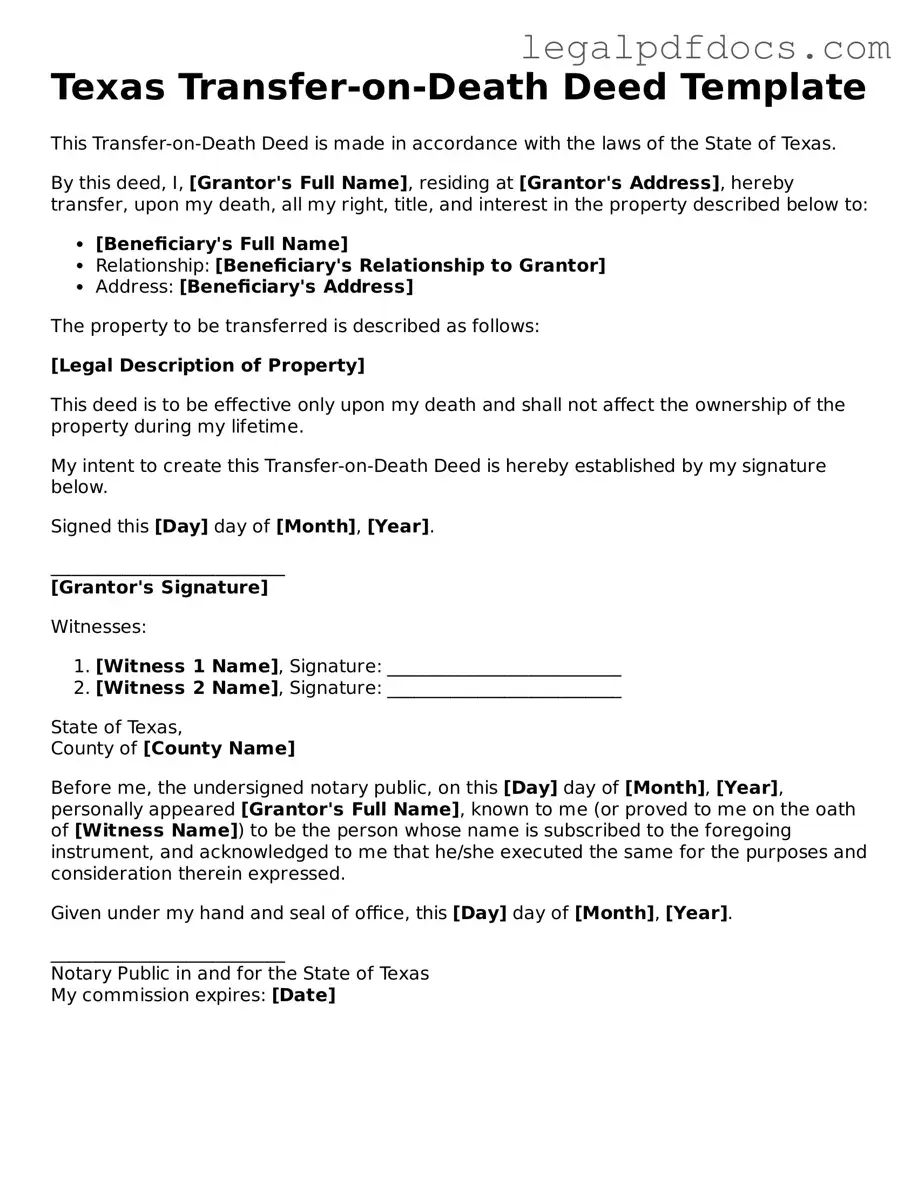In Texas, planning for the future often includes ensuring that your property is passed on to your loved ones in a seamless manner. The Transfer-on-Death Deed (TODD) is a vital tool that allows property owners to transfer real estate to designated beneficiaries upon their death, bypassing the lengthy and often costly probate process. This straightforward form offers a way to retain control of your property during your lifetime while providing a clear path for its transfer after you are gone. Importantly, the TODD can be revoked or modified at any time, giving property owners flexibility as their circumstances change. Understanding how to properly execute this deed, including the necessary requirements for its validity, is crucial for anyone considering this option. This article will delve into the key features of the Transfer-on-Death Deed form, its benefits, and the steps involved in ensuring that your property is transferred according to your wishes, all while minimizing potential disputes among heirs.
